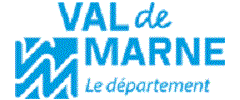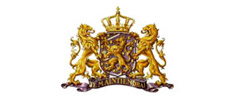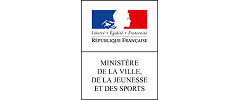Gender Greenstreaming
Gender justice in the work of nature conservation and environmental organisations
09.11.2005 |Dr Christine Katz
About Gender Greenstreaming
The core concern of the project is, in close cooperation with the member organisations of the DNR, to analyse gender relations, i.e. gender-specific features of the organisations’ working conditions, structures and contents. It is still predominantly men who are the moving forces behind environmental policy in the institutions relevant to decisionmaking and whose ideas as to how protection of the environment is best achieved dominate. Consequently, proposals for anything other than technological solutions often fail to attract attention. If the significance of gender conditions to an organisation’s own nature conservation work is to be disclosed and critically examined, one thing is vital: the process needs to be designed and carried forward not just by the top management of the organisation but also by its base. For the gender mainstreaming process, the heterogeneous structures of DNR member organisations will require that top-down methods be supplemented by activities initiated from the bottom up in order ultimately – and this is another goal of the project – jointly to develop approaches for examining gender relations in organisation-specific work contexts.
How it came about: the preliminary study
The project builds on the results of a preliminary study commissioned by DNR which was drawn up by the University of Lüneburg in 2003. To date, gender mainstreaming activities have been initiated by the environmental organisations only on a sporadic basis. Enquiry was seldom made as to how gender issues and people’s understanding of their own relationship with nature are connected. At first glance, gender appears to be remote from practical nature conservation work: for the survival of a toad, surely it is irrelevant who carries it over the road? On the other hand, the organisations have a number of mechanisms and activities which can be described as traditional methods for the advancement of women. The aim of the study was therefore to determine more precisely what relevance is given to gender aspects in the work environments of the organisations and what obstacles stand in the way of integrating gender issues.
Why the environmental organisations?
Four reasons for concerning environmental organisations with gender aspects
1. Anyone who is “gender-blind” contributes toward making environmental problems worse. Our society consists of men and women who have been socialized differently and contains a variety of blueprints for living and life stories as well as differing social and cultural roles (gender). This variety is also evident in the way we act in general, in the reflections and career decisions we make from a certain perspective and also in the manner of our individual and society’s treatment of nature. If we do not keep sight of the fabric of social relations and power structures in society, we will possibly take decisions that will contribute toward intensifying environmental problems and reinforcing discrimination.
2. Long live diversity – new perspectives and approaches to solutions are in sight
If the thematic approach and its implementation at the professional and voluntary level did justice equally to the daily realities and experiences of men and women, this would firstly open up new perspectives on environmental problems and approaches to solving them. Secondly, women or those who move in “women’s spheres” would feel adequately represented and would accordingly be more highly motivated actively to contribute their knowledge and ways of looking at things. Last but not least, active integration of the gender dimension into the organisational context would assist the organisation in establishing a profile for itself: in commercial organisations the institutionalised consideration of gender has long been seen as a badge symbolising a modern type of organisation.
3. Fair’s fair: basic legal principles and the question of justice
The equality of men and women is already enshrined in the Basic Law. In order to attain this goal, however, a number of things still need to happen. The Federal Government has recognised gender equality as a universal guiding principle. It is also necessary, particularly for nature conservation and environmental organisations with their roots in social criticism, to develop work structures that enable tasks and codetermination and decision-making powers to be shared fairly between men and women.
4. Lovely money – the allocation of subsidies
Another reason relates to the fact that the organisations’ activities are partially dependent on public funds. When they are deciding for or against providing financial subsidies, the subsidising institutions do indeed attach particular importance to the question of whether gender aspects are taken into consideration. The Gender Greenstreaming project is itself being supported financially by the Federal Ministry for the Environment/Federal Environmental Agency.
What is offered until May 2006?
- Consultation/switching of gender trainings & switching from co-operation partner (within the DNR)
- Coaching addressed to organisation-internal inquiries related to the integration of the gender perspective (exemplary gender analysis)
- Guidance on mentoring programs of the youth into the adult organisation
- Consultation for a gender-sensitive environmental formation (advanced training, workshop, seminar component)
- Topic-specific consultation and analysis of contentwise gender issues / project support
- Execution of gender workshops about organisation-specific topics
- Consultation for a gender-sensitive public work
Towards the end of the project a conference of future is planned, on that the results of the past process be introduced and discussed with the objective to create obligatory basic conditions and formulate purposeful planning steps, which ensure a further continuation of the process begun in the organfederations. So it is to be guaranteed that also in the future on equal chances which are based structures are furnished, received and also in the contentwise work gender crude courses are made visible.
DNR-Projekt Gender Greenstreaming
c/o Universität Lüneburg
Institut für Umweltstrategien, Umweltplanung
Scharnhorststr. 1
21335 Lüneburg
Germany
Tel. +49 (0)4131/78 29 66/-67
From 2005-10-04: +49 (0)4131/677 29 66/-67
gendergreen@uni-lueneburg.de

































